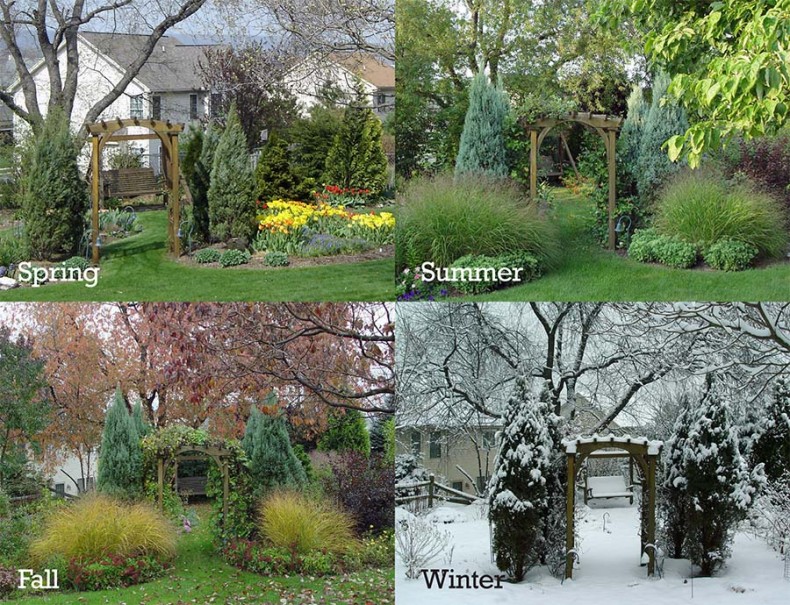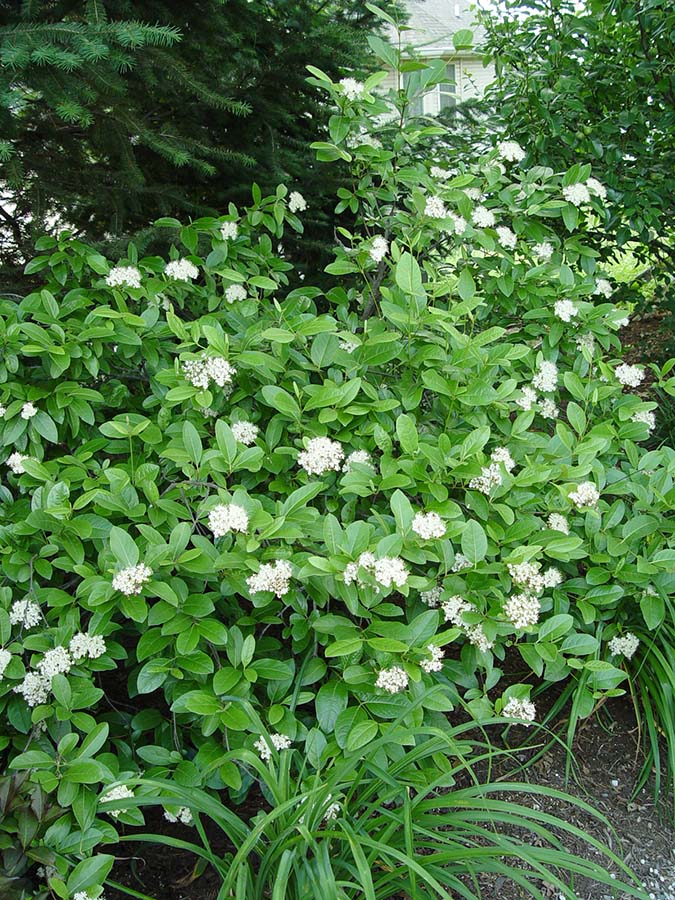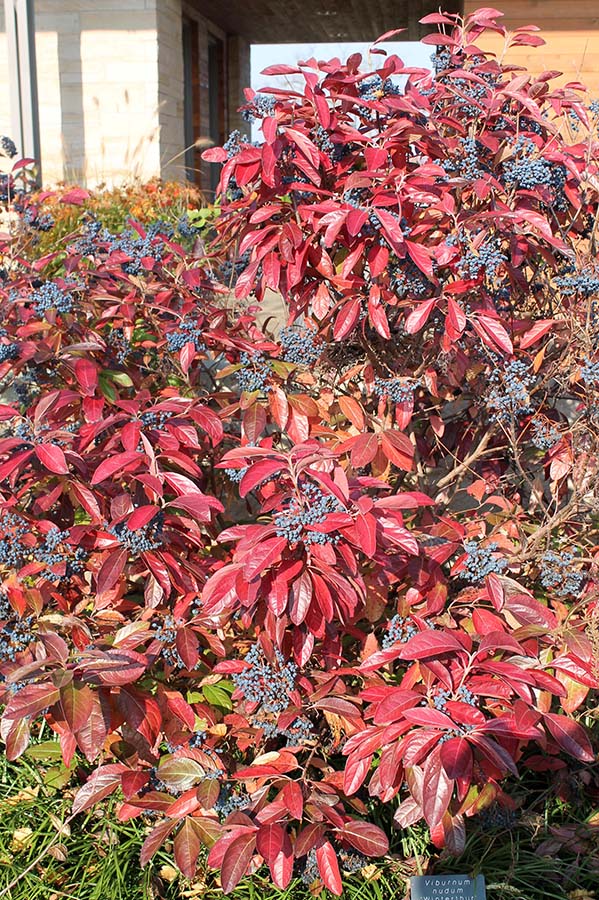Four-season interest
Giving your yard color throughout the year
By George WiegelSpring bulbs add the season’s first color to this garden. Grasses have grown and perennials bloom at different times throughout summer in the same garden. The ornamental grasses that were green in summer have turned golden by fall, and the background tree has taken on deep-red fall foliage. The arbor and evergreens take center stage in the same garden in winter.
Sometimes it’s not easy making a yard look good even in one season, much less all four.
The job is a little easier in spring to early summer when the majority of plants bloom and in moderate climates where seasonal differences aren’t as harsh.
It gets much harder where seasons bring major changes, such as North Carolina’s hot summers. It’s hardest of all in cold-winter climates where the landscape can be buried under snow for months at a time.
A viburnum shows off fragrant white flowers in spring with green leaves (top photo), then the same plant develops a different but even showier look in fall with its dark-blue fruits and blood-red foliage.
Still, it’s possible to milk the most out of any landscape anywhere with good planning.
The goal is to pick a diverse selection of plants that has something different going on at different times of the year.
Too often that doesn’t happen because gardening tends to be viewed as a “spring thing.” The result is that everyone shows up at the garden center as the weather warms in spring and ends up buying the same plants that happen to be peaking then.
A crape myrtle, for example, that will bloom beautifully by late summer, but that looks like a bare set of moose antlers at purchase time, has little chance next to an azalea that’s blooming in full glory.
Buy your plants at the same time year after year, and it’s no wonder that many yards end up as one-season wonders.
10 ways to do it
If you’d like to start spreading out your interest this season, here are some ways:
1. Add more variety
Plant more plants and different kinds of them. Even when planting a particular species, choose several different varieties of it to capitalize on their differences.
2. Evaluate seasonal weaknesses
Do homework into what plants are in prime form at what times. Then think about what each part of your yard looks like in each season, and seek out plants that will add interest to those boring gaps. Make notes during seasons to help identify the down times most in need of help.
3. Move beyond two-week wonders
Many of our favorite landscape plants happen to be one-dimensional plants that peak only for a few weeks out of the whole year. They tend to be ones that have the good marketing sense to bloom when the most people are shopping, such as azaleas, rhododendrons, lilacs, peonies and forsythia.
4. Look for plants that do more than one thing
For example, viburnums are shrubs that flower fragrantly in spring, turn yellow or red in fall, then develop berry-sized fruits of red, gold, blue or black from fall into early winter. Some even hold their leaves in winter. Native ninebarks are shrubs that flower pinkish-white in late spring, then get BB-sized clusters of red seed-heads in early summer, then turn blood red in fall, then display peeling stems when bare over winter. Leaning toward plants with multi-season interest is especially helpful in smaller yards with limited space.
5. Color comes from leaves too
Pay attention to leaf color, especially in plants that hold foliage over winter.
Blooms are fleeting, but colorful leaves and needles add interest much longer … some of them all year long.
6. Shop in different seasons
Make it a point to go to the garden center whenever your yard is looking particularly barren.
7. Visit public gardens
They’re great for getting ideas and seeing what’s doing what at any given time. Take advantage of public gardens near you because the plants doing well there are likely to do well in the same climate and soils as your yard. Visit these in different seasons, too. Public gardens are especially helpful because plants are usually labeled.
8. Pay attention to what other people have planted
If you see plants nearby doing something interesting at a time when your yard is snoozing, find out what those plants are and add them to your list.
9. Don’t overlook “hardscaping”
These are the paver walks, the stone walls, the arbors, the fences, the benches and the other non-plant features of the landscape. Not only do they add structure or “bones” to the look during the growing season, they’re at their best in winter when many to most plants are off stage.
10. Add dedicated seasonal gardens
In addition to mixing plants with multi-season interest throughout the yard, consider planning whole gardens that peak in a particular season. Load those gardens with plants at their best in each assigned season, for example, a summer garden filled with annual flowers and summer bulbs and a fall garden highlighted with plants that get late-season berries and turn leaf color.
About the Author
George Weigel is a Pennsylvania-based horticulturist, garden consultant, author and newspaper garden columnist. His website is georgeweigel.net.-
Share this story:





